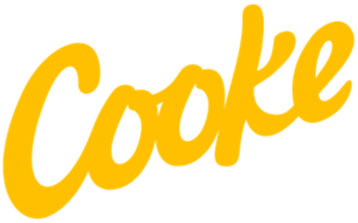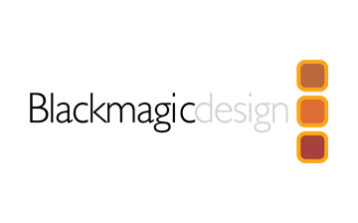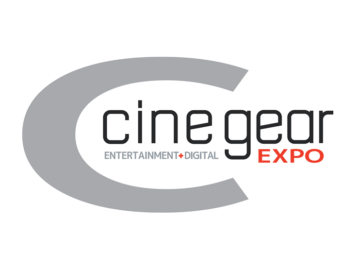
The 3rd ASC summit ran in 4 consecutive days. The headquarters were based in the ASC Club House a few yards from Dolby Theatre and Hollywood Boulevard. This is a resumé of the multiple activities and presentations that took place.
THE LARGE FOMAT – IMAX The Dunkirk experience with Hoyte van Hoytema ASC NSC  The summit opened with a warm welcome by the Kees van Ostrom ASC NSC president of ASC and the crew members Patty, Delphine and Alex who were amazingly organized. Their voices could be heard amongst the high level of noise by the delegates chatting in between sessions and breaks. A demonstration of the sense of open and relationship that quickly developed between delegates where no ice was needed to be broken.
The summit opened with a warm welcome by the Kees van Ostrom ASC NSC president of ASC and the crew members Patty, Delphine and Alex who were amazingly organized. Their voices could be heard amongst the high level of noise by the delegates chatting in between sessions and breaks. A demonstration of the sense of open and relationship that quickly developed between delegates where no ice was needed to be broken.
The first subject was to have the experience of the large format projection and capture. It took place in the IMAX theatre at Universal park with the projection of the entire film «Dunkirk» on 65 mm analogue print. Before there was a conversation with the director Christopher Nolan, the producer Emma Tomas and cinematographer Hoyte van Hoytema ASC FSF NSC.
Emma Thomas enhanced the fact that shooting in film or digital doesn’t matter in terms of costs as long it serves the project. «It is an artistic choice to use 35mm, or 65mm or any other format. It is not the cost of shooting on film. There was a moment that the studios were afraid of the fall of the infra structure but more and more films are being shot on film and labs are working beautifully and Kodak has been very supportive» Emma said. In relation to the use of multiple formats Christopher mentioned that he wanted the audience to have « an immersive experience as they do not have in common displays. The emotion of being before a wide screen along with the sound track accordingly gives the audience and genuine experience of being there where the story envolves». The reason to shoot on multiple formats was due to «needs of distribution. IMAX certainly doesn’t fit in the tv screen and it was needed as well a format for regular theatres» and «it was a wise decision» said Emma Thomas.
For Hoyte van Hoytema it was curious to hear the expression that 65mm could be a good format for documentary «It handles so well flat lighting and the shallow depth of field is so good it doesn’t demand any lighting in particular» and Nolan adds « it is such a clean format. 65mm is so rich and clear». Afterwards the delegates had one more chance to watch the film and experience once again the large format of the fantastic IMAX projection in the Universal Cinema in Los Angeles.
THE CROWN – Adriano Goldman
The day ended with a surprising Adriano Goldman ASC ABC cinematographer of the successful Netflix series «The Crown». Very talkative, almost no need for moderation. Very open to share his skills after the projection of several clips of the with an astonishing and bold cinematography. The series are shot on a SONY F55 and Goldman uses old Panchro Cooke lenses along with a haze filter. The contrasts are strong with often silhouetted figures. Adriano says that this style wouldn’t be possible if not worked in close cooperation with other departments «these series give me the rare opportunity to work closely with the set designer». Goldman explains the aesthetics « I rather have the actors separated with the background or by light from the windows or by the set rather than using backlight. I always avoid when not justifiable» One characteristic of the «Crown» there is not so much coverage as expected from a Tv regular series Goldman explained that it is a work with the director and both work the mise-en-scene to prioritize longer shots than rather cutting. « the actors enjoy it immensely and enriches performances» In one of the clips Adriano screened for the audience, it can be seen clearly in the night scene that there is one bulb in frame causing a strong flair. Adriano said that fact intrigued the producer who asked him how could be justified such light and Adriano honestly said that for a moment he couldn’t give him a right answer, but the director came on his help and said «That is the light that makes all this look beautiful».
 | 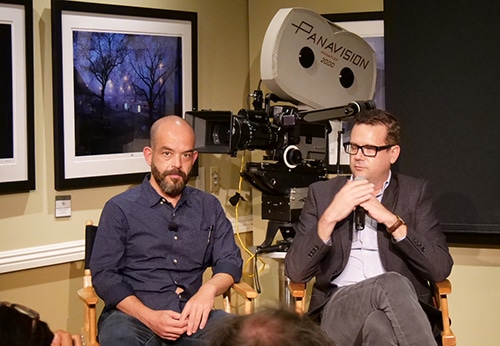 |  |
ACES
The ACADEMY is dedicating a significant effort to establish a colour space system to find a standard for all camera and post-production manufacturer which will benefit everyone in the industry.
The 2nd day began by visiting the Pickford Centre for Motion Picture Study with a welcome speech by Academy of Motion Picture president John Bayley ASC. Not too much to repeat once again that John is the first ever cinematographer to take that position as he mentioned and one of the few which took the presidency as called below the line professionals in the motion picture industry.
Afterwards the audience could experiment a detailed explanation about the Academy Color Encoding System (ACES) and visit the studios where Joachim Zell and Alex Forsythe test exposure index which is an investigation with all camera manufacturers in the market.
The visit ended with two more lectures about Spectral similarity index and the complexity of LED lighting spectrum and colour behaviours.
ACES central is a forum online where you can participate by sharing your thoughts and experiences with the Colour encoding system ACES. http://acescentral.com/ For more info you can visit http://www.oscars.org/science-technology/sci-tech-projects/aces
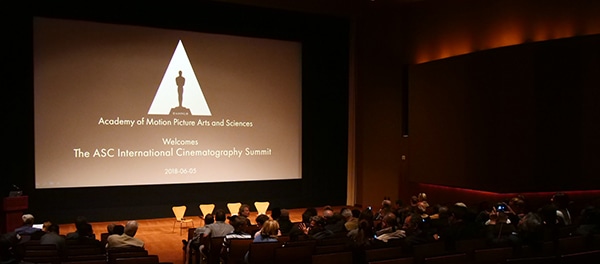

DOLBY CINEMA EXPERIENCE – MINDHUNTER
HDR is the hot topic now. The Dolby experience took the summit delegates to experience the technic with colourist Eric Weidt who worked on the David Fincher series «Mindhunter» the psychological thriller set in the 1970’s. The colour grading on base light was peculiar and detailed to emulate the image aberrations and defects of the lenses and film stock of the 70’s. Eric was detailed in explaining some of the steps taken on grading process of the film. The audience could sense the peculiarity and detailed vision of the director David Fincher about details and artefacts on the image.
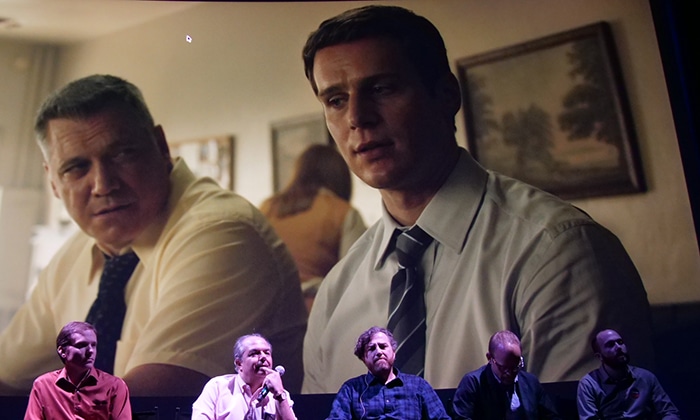
The group responsible for the production of the Netflix serie «Mindhunter» as they debated with the ICS delegates.
Ivan Putora inventor of the Charpness Test
Later in the second day, which was the longest of the Summit, all delegates came «home» to the ASC Club House.
President of ASK Lucas Teren from Slovak Republic presented a small documentary about the ASK society’s honorary member Ivan Putora who was the inventor of the focus chart. Only a few of  us could think that the most used focus chart in our professions was invented by a Czechoslovakian student in the mid 1960’s. Ivan Putora´s during his studies in Prague presented his sharpness indicator in a thesis presentation and only many years after was distributed worldwide for every lens tester. In the 1960’s Czechoslovakia was under the soviet communist rule and Putova a few years later emigrated to Canada where he lives. In 1992 Czechoslovakia was separated during the Velvet revolution in two independent states. Today exists Check Republic and Slovak Republic. Ivan Putora is from Slovak Republic. The Canadian Society of Cinematographers have given recognition to Ivan Putora’s invention in 2003 as you can read in an article published in the CSC magazine.
us could think that the most used focus chart in our professions was invented by a Czechoslovakian student in the mid 1960’s. Ivan Putora´s during his studies in Prague presented his sharpness indicator in a thesis presentation and only many years after was distributed worldwide for every lens tester. In the 1960’s Czechoslovakia was under the soviet communist rule and Putova a few years later emigrated to Canada where he lives. In 1992 Czechoslovakia was separated during the Velvet revolution in two independent states. Today exists Check Republic and Slovak Republic. Ivan Putora is from Slovak Republic. The Canadian Society of Cinematographers have given recognition to Ivan Putora’s invention in 2003 as you can read in an article published in the CSC magazine.

A Fantastic Discovery
Marek Jicha ACK presented a very interesting discovery. It is an historical discovery which can for instance change the chronological film, history as we know. Founded by accident during a study research by a Czech student while digging in archives at the Prague Cinematheque, was found a box, which was there for several decades. Inside it was footage of footage from Étienne-Jules Marey,(1830-1904) French scientist, physiologist and chrono photographer whose use of photography for his scientific studies enter in the pre history of film. The footage found depicts a small piece where we can see clearly in high quality images a daily scene in Place de la Concorde in Paris. Marek explained the procedure of digitalizing the images and preserving them.
research by a Czech student while digging in archives at the Prague Cinematheque, was found a box, which was there for several decades. Inside it was footage of footage from Étienne-Jules Marey,(1830-1904) French scientist, physiologist and chrono photographer whose use of photography for his scientific studies enter in the pre history of film. The footage found depicts a small piece where we can see clearly in high quality images a daily scene in Place de la Concorde in Paris. Marek explained the procedure of digitalizing the images and preserving them.
The projected images were outstanding of its quality and the ancestry of it. It is though that those images were captures before the Lumiére Brothers or any other motion picture before. The format used was negative 88 mm without perforations. The reason was that Mary didn’t have intentions of motion picture studies but only for focused on getting material for his scientific studies of the human and animals movement.
 IMAGO presentation
IMAGO presentation
Closing the second day of the Conference IMAGO has its opportunity to present several aspects of its activity. President Paul René Roestad FNF explained the activities of IMAGO and the issues concerning the federation. The authorship, working conditions, two main subjects which IMAGO has been fighting for several years. Louis Philippe Capelle general secretary followed by explaining most of the activities with partners. Tony Costa AIP presented the education committee activities and aims and Philippe Ros AFC talked about the Technical Committee presenting studies concerning texture in the digital domain. Elen Lotman ESC closed the long day with a presentation of her study research on Psychological of perception – a new tool in cinematographer’s tool kit?
New Trends in Cinema Display
The delegates were presented with the brand-new Samsung screen installed at the Winnetka Pacific Studios. Curtis Clark from the ASC Technical Committee debated along with technical staff from Samsung aspects of the new screen. The room was equipped with large chairs where the audience can lay down as if they were on the couch at home. The room is equipped with a 7 to 1 surround system. The huge screen which is a huge television measuring 10×6 meters. It is composed of millions of pixels and can built in blocks. The luminance capacity of the screen goes up to 500 nits. Several reels were shown, and the audience was not so convinced with HDR projection footage. The luminance was too bright, and another footage was screened at a lower luminance but didn’t yet satisfied part of the audience due to its sharpness and brightness. But other footage was shown not HDR and the audience a lot more pleased with the quality of the screen. This screen is the very first one assembled in a commercial theatre in the world.
The brightness of the screen illuminates the audience when brightness is high. This screen gives a different impression to the audience. The luminance comes from the screen rather from the back.


PANAVISION
It was an exciting afternoon at Panavision premises. The whole group was received with a wonderful lunch outside with a nice sunny day which was followed with a PANAVISION presentation with a lecture delivered by Dan Sasaki about «Vision Human Perception». It was an introduction to what we were going to learn afterwards. PANAVISION presented its new H- Series lenses, new filter system, Large format, Pana speeds, it seemed to be a renewal or a relaunch of a new company, by seeing so many novelties at the same time. The whole afternoon was taken to give us a presentation of set of various lenses
– Primo 70
– Pana Speed T 1.4
– H-Series
– Ultra Vista
– Primo X
A new camera model of the DXL M D2E 1.0 capable to be manoeuvred by wi-fi and from any mobile phone android or iphone to introduce LUT’s, HD proxy files ready for the editing suite, no need of transcoding, a camera ideal for commercials and low budget.

About the lenses a new series are about to arrive. The Primo X lenses. Totally water proof to be used on drones and gimbals. All controls focus and iris all remote controlled. The lenses have a different configuration made. A small window on the side of the lens exists a digital display where focus distances, Iris and the depth of field will be displayed to check. Totally wireless controlled.
A new series of lenses for large format was presented. The images screened were astonishing when displayed on screen. Some footage shot on large format size sensor and used with ultra-vista lenses. The wide screen and the quality of the image were impressive.

The new system for ND filters were also introduced. ND’s made from liquid crystal. Just by pressing a knob the filters display on the filter located in the matte box.
The audience was left impressed by the end of the session. For some, it was an impression of returning to the old good times of large formats and for others a new discovery on the large screen and the magic of lenses.
FOTOKEM
The third day ended at FOTOKEM Lab with a several booths of discussion. An HDR film presentation «MITHBUSTERS» in a detailed explanation of testing HDR in several environments, plus a discussion with cinematographers of the indie film «All Creatures Here Below» Bongani Mlambo and colourist Alastor Arnold. Both showed several clips of the film and discussed one by one with the audience the challenges they have encountered. A third group got to get a conversion with Steve Yedlin cinematographer of «Star Wars. The Last Jedi». The follow up with dailies during production was well referred in the presentation and the importance of the colourist and the lab to follow daily the production.
The day ended with a very pleasant dinner offered by the Lab.
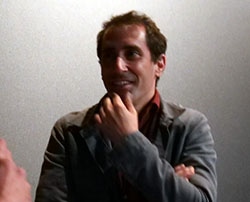
This is already a lengthy article but finally we reach the last day of the works. All sessions took place at «Home» it is the same to say that we didn’t leave the ASC Club House for the day. A few interesting sessions took place starting with, CELEBRATING DIVERSITY ON THE CREWS. Where a group of panellists have taken the floor to remind us that there are out there many minorities in every country who deserves an opportunity no matter its colour, origin or sex. We live in a world of diversity and that is the richness of profession. Culture diversity has a strong input in our stories. Ron Johanson ACS and IMAGO board member was part of it.
1 Film 3 Visions
Tony Costa AIP IMAGO has been working around a thesis about cinematography for a few years. Having in the background the fundamental issue of authorship rights, the Portuguese/Canadian cinematographer has produced a film for his PhD studies to be presented and evaluated for the academic degree at the Lusofona University in Lisbon.
The essay named «1 film 3 visions» was co-produced by Lusofona University in Lisbon and by HFF Munich Film School and was films in Munich last March.
The research study intends to find out if there are any perception changes on the audience depending on the aesthetics of the image. So, the film intends to discover if the photographic style applied to the film along with composition and movement can give a different narrative impression to the audience independently of the mise-en-scene of the director. To be able to prove any of these, Tony Costa assembled the idea of shooting one script, with the same director, the same set, the same crew and the same actors three times, changing only the cinematographer. So, the film was produced in the HFF studio in Munich with the production of Katrin Richthofer during the Hands-on workshops last March and the film was shot three times. Once by Axel Block BVK, Nina Badoux from the Netherlands and Roberto Schaefer ASC. The three films were directed by German director Ilse Hoffman.
A Vision of painter’s – Colour Framework for the digital image texture.
A presentation by Rolf Coulanges (BVK) and Peter Postma (FilmLight) about the manipulation of colour in post-production. The essential idea that Rolf centres his thoughts about the study of colour is the fact that the stimuli and perception are factors that influence reception of colour and texture tones. The full article can be seen HERE.
On Safety & Union issues Steven Poster ASC president of Local 600 presented several films related to safety at work. Problematic issues like long consecutive days of
Steven Poster ASC president of Local 600 presented several films related to safety at work. Problematic issues like long consecutive days of work, safety, were strong subjects presented by Steven Poster. The film «If not now…when» grabs the audience due the sensitive subject of long days.
work, safety, were strong subjects presented by Steven Poster. The film «If not now…when» grabs the audience due the sensitive subject of long days.
Watch the video it speaks for itself. https://vimeo.com/220880990
Visit the website https://www.icg600.com/


